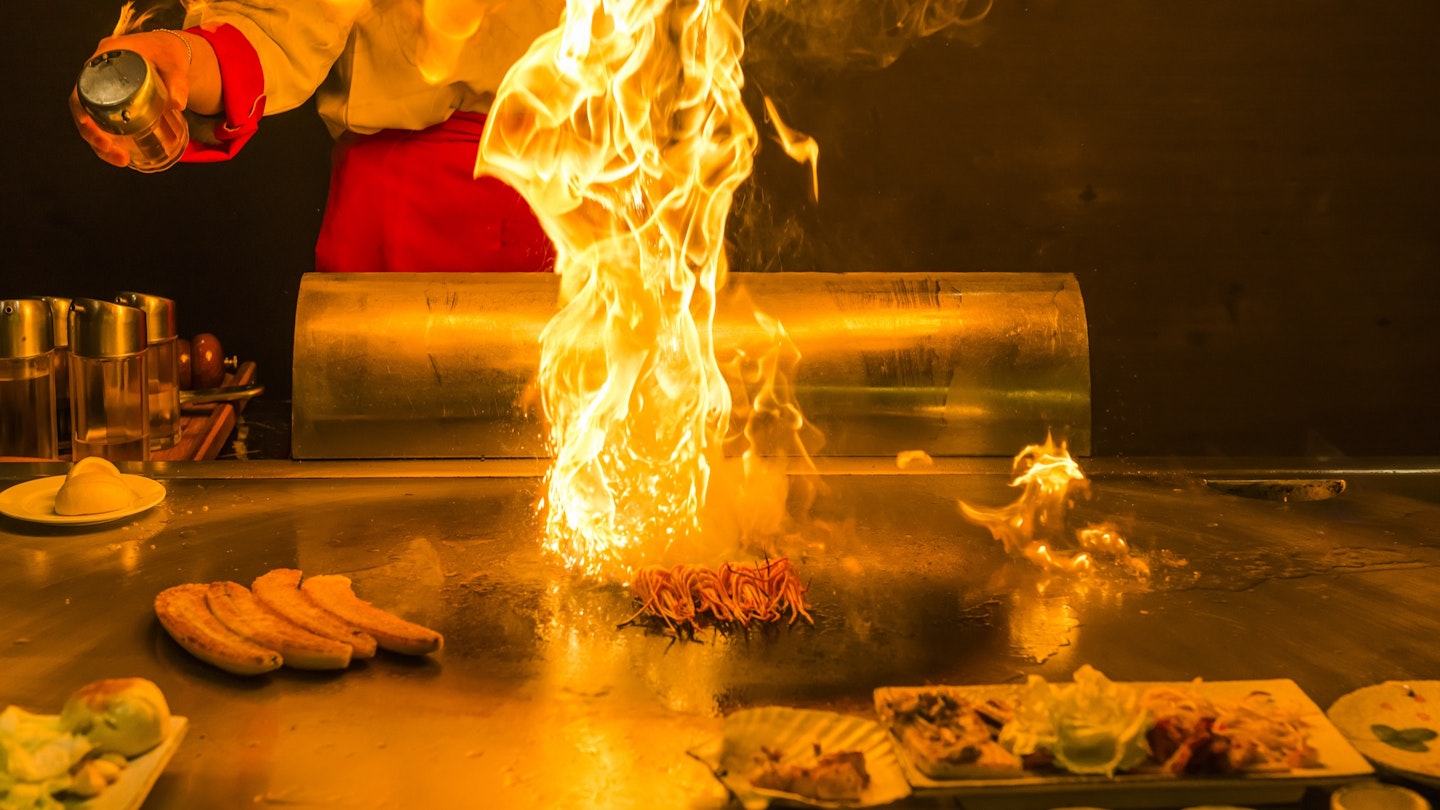Exploring Fire-Powered Flavors Across the Globe
While traversing the world in the 1830s, Charles Darwin and the crew of the H.M.S. Beagle faced uncertain meals. However, when heat transformed inedible ingredients into sumptuous dishes, it led to Darwin labeling fire as “probably the greatest discovery ever made by man, excepting language.”
Darwin’s fiery realization coincided with his travels, emphasizing how many of us connect with new cultures through their unique cuisines. Flavor memories often allow us to revisit our favorite destinations without leaving home.
Three distinct locations — Japan, Kansas City, and Lebanon — showcase varied cuisines yet share a common element: flavors enhanced by fire.
Pan-Fried Teppanyaki Wows in Japan
Nestled in the Pacific Ocean’s Ring of Fire, Japan is widely recognized for its delectable sashimi, or thinly-sliced raw fish. However, fire has long been integral to grilling heartier fare in Japan.
The small charcoal grills popularly known as “hibachi” are actually referred to as shichirin in Japanese. While they differ from the large cooking surfaces seen at many Western-style Japanese restaurants, the delightful dishes prepared remain comparable.
This culinary method, known as teppanyaki — teppan meaning metal cooking plate, and yaki translating to grilled or pan-fried — incorporates a variety of proteins including beef, shrimp, scallops, lobster, chicken, and various vegetables such as mushrooms, cabbage, and peppers. These ingredients are cooked using light oils, often characterized by coconut or canola flavors, and are served with fried rice or yakisoba stir-fried noodles, complemented by savory dipping sauces like soy, sesame, and ginger.
For those lacking an extensive cooktop, Japan’s street food scene offers yakitori, delectable skewers of grilled chicken perfect for eating on the go, and gyoza, crispy pan-fried dumplings filled with savory pork or vegetables. Itadakimasu!
Centuries of Cuisine Culminate in Kansas City
Cooking over an open flame doesn’t necessitate specialized equipment. In fact, primitive humans have been grilling for nearly 1.8 million years. The term “barbecue” traces back to the Taino tribe of Caribbean Indians, who referred to their elevated cooking method as barabicu, or “sacred fire pit.”
The history of barbecuing in the United States goes back to Colonial times. Instead of moving upward as seen in some cultures, Americans dug deeper, crafting barbecue pits. In the South, chefs slow-roasted tougher cuts of meat, transforming them into tender delicacies.
The establishment of Kansas City barbecue emerged when a Memphis pitmaster relocated to the Midwest in 1908. Henry Perry’s tender, slow-cooked ribs became popular, with jazz-era enthusiasts further establishing Kansas City as a culinary landmark.
However, the expertise of Kansas City pitmasters extends beyond ribs. They also prepare brisket, pork, and chicken, all intricately flavored with sauces featuring peppers, chili powder, and sweet brown sugar, among other ingredients. The prized “burnt ends,” are the flavorful tips of brisket, absorbing rich flavors through hours of smoking, ensuring each bite bursts with juiciness and crispness.
The Spit-Roasted and Zesty Tang of Lebanon
By adapting the horizontal spit of a barbecue pit, one can embark on the journey of creating Lebanon’s beloved shawarma. Typically prepared with lamb or chicken, shawarma may also feature mutton, beef, veal, or turkey, with thin cuts rotating to achieve roasted perfection.
This vertical cooking technique originated in the Ottoman Empire during the 19th century and spans culinary traditions, leading to creations such as the doner kebab from Turkey and the gyros of Greece. Lebanese immigrants also brought this technique to Mexico, resulting in the delightful tacos al pastor.
Shawarma can be enjoyed in various forms, whether as a sandwich, a wrap, or a platter served with grilled pita and mezze — a selection of small dishes ranging from hummus and baba ghannouj to tabbouleh salad and more. Other hot mezze options like falafel, kibbe, or kefta can also be found, offering a true taste of Lebanese culinary culture.
Note: The highlighted flavors represent just a glimpse into the rich culinary practices of Japan, Kansas City, and Lebanon. For those looking to recreate these tastes at home, consider external resources to explore ingredients and cooking methods. Enjoy the global flavors and fire-powered delights!





